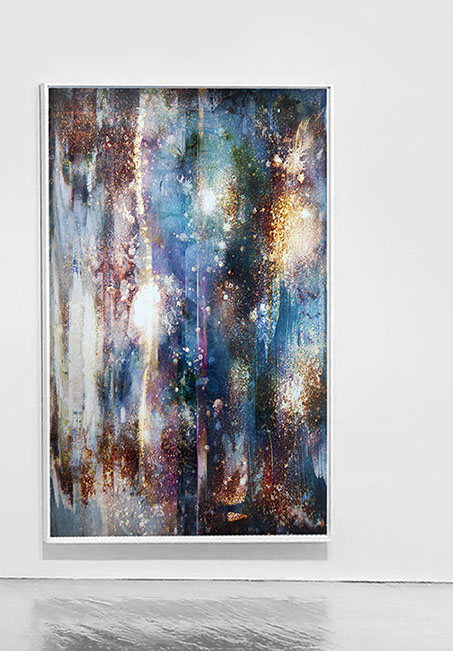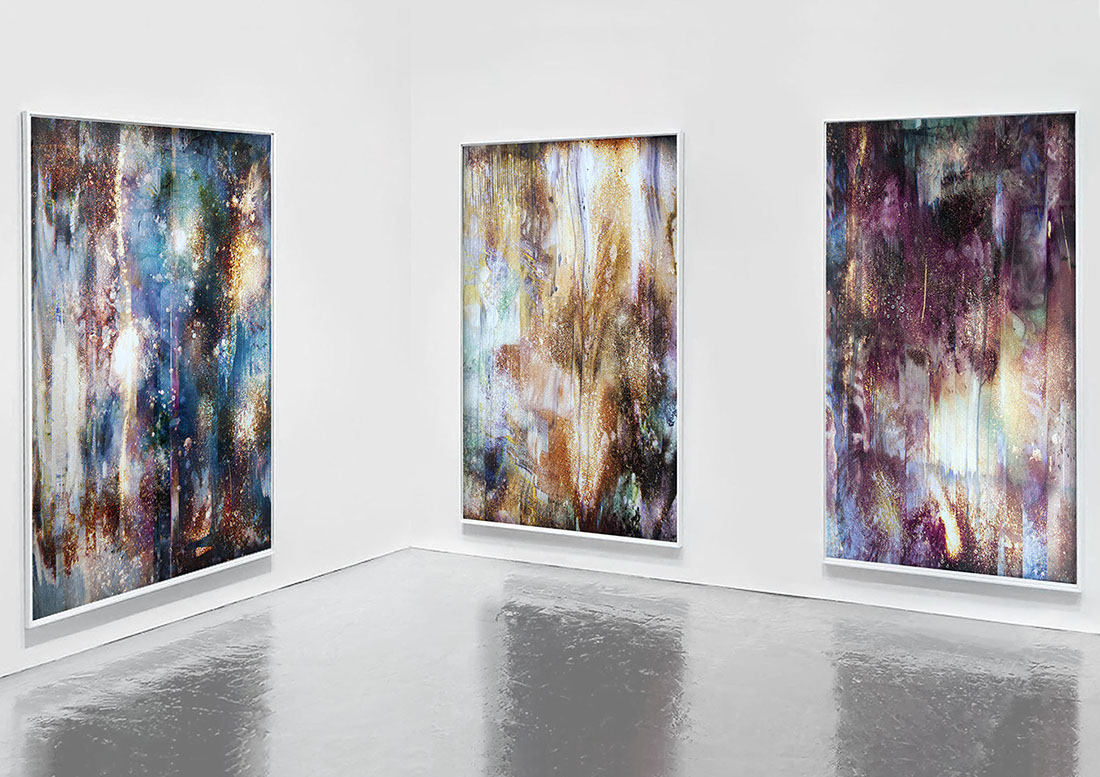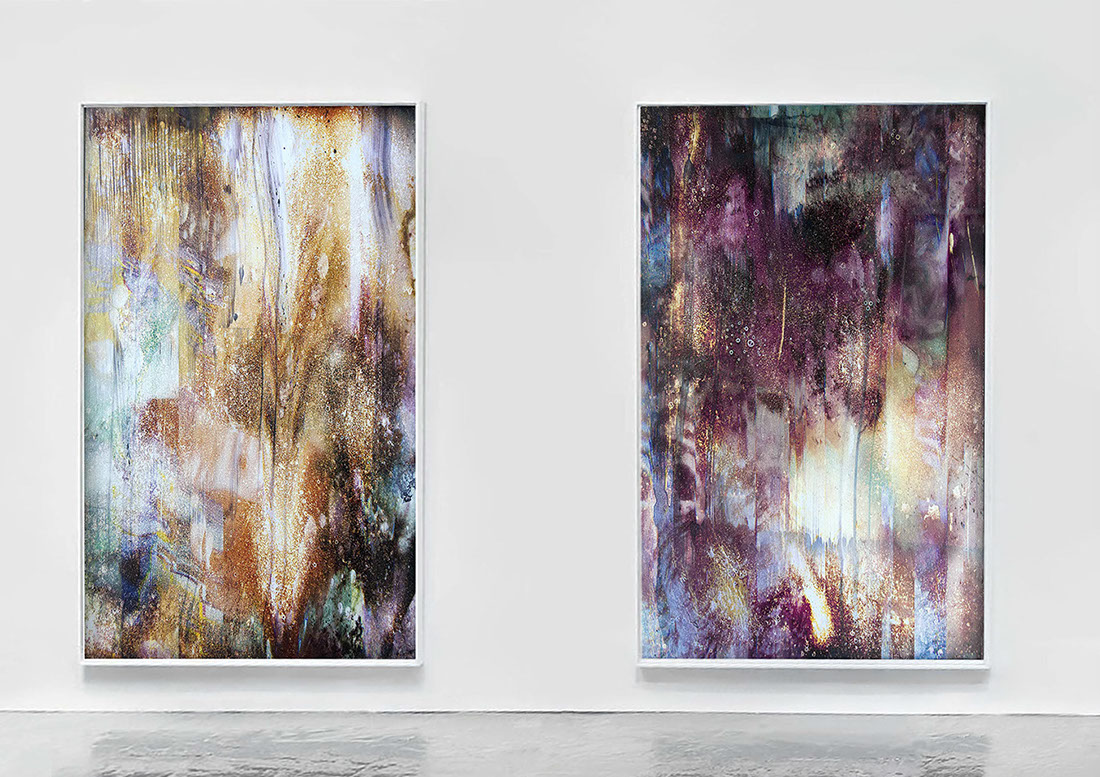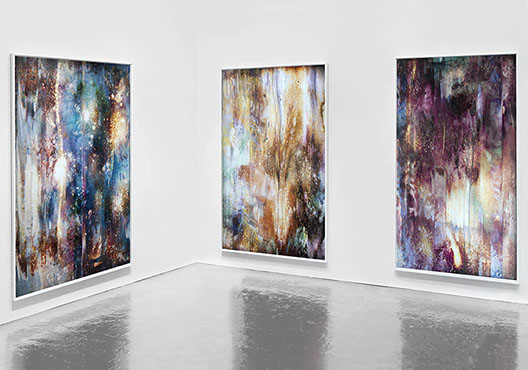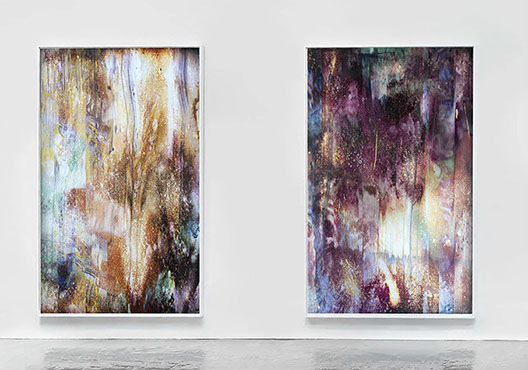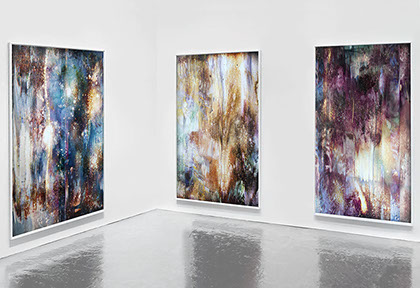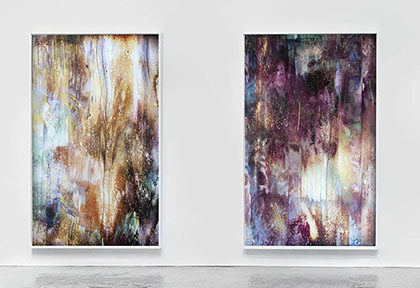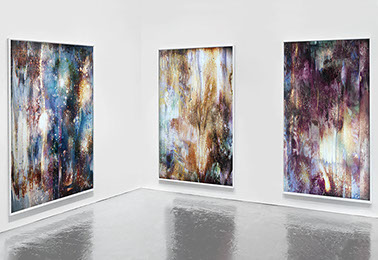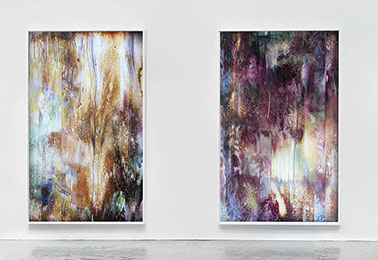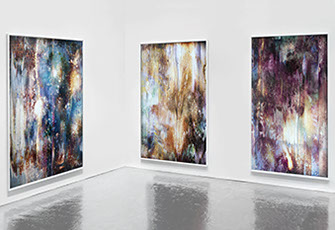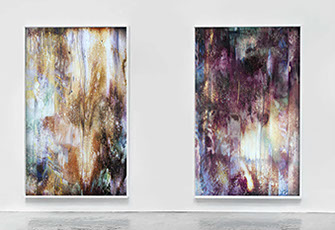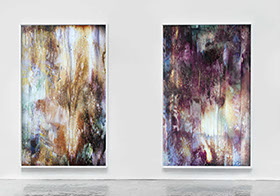ultralight
2015 — Studio view, Toulouse
Lambda prints, wood
Made through a chemical process of sodium hypochlorite (bleach), the photographs are eaten away in their flesh by oxidation. The sheets of paper are sprinkled with an acidic agent that causes the colored silver salts to resurface from its fibers. Rosalind Krauss speaks of photography as "an imprint, a decalcomania of the real. It is a trace - obtained by a photochemical process."
Photography has whitened, it retains the traces of the artist's gesture. The evaporation of the corrosive solution stops the manufacturing process, the image is fixed. Laura Rives' prints flirt as much with abstract painting as it does with photography. Each photograph is both reproducible in its process and unique in its result.
It is a rejection of the function of photography: that of preserving an image of the world. We lose our referents, that slip away and disappear. We retain colored and blurred flows that mix with each other, stretch and whiten. The material is mishandled, forced to disperse, pushed to its last trenches. Patterns appear in a slide, its porous structure is burned. Overwhelmed by a moving material, the photograph flows into a form in the making, an organic matter that liquefies. And as Roland Barthes once said of photography: "It commonly has the fate of (perishable) paper, [...] mortal: like a living organism, it is born from the silver salts that germinate, it blossoms for a while, then ages. Attacked by light and humidity, it turns pale, becomes exhausted and disappears".



















